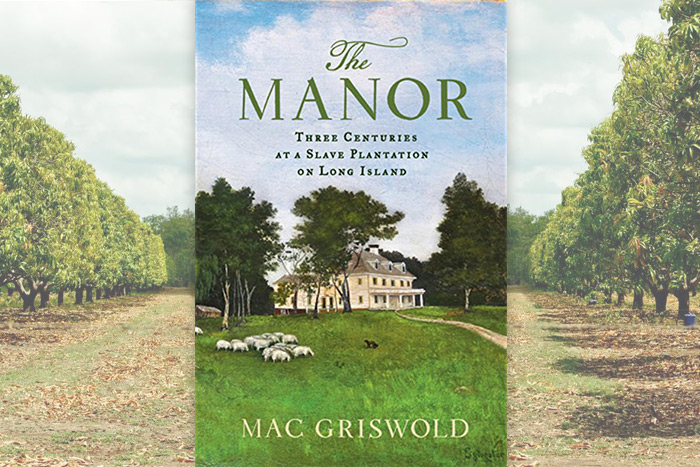Mac Griswold's 'The Manor' Explores Slavery on Shelter Island

Don’t read East Hamptonite Mac Griswold’s 2013 masterwork The Manor because February is Black History Month. Read it because every month is Black History Month, especially if you live in America.
Griswold’s exhaustively researched tome traces the rich history of Sylvester Manor on Shelter Island, aka Manhansucke Ahaquatzuwamocke, “island sheltered by islands.” Established in 1651, the acreage that surrounds the 1737 Georgian manor house, that still stands today, relied on slave labor to maintain the property for 159 years of its history.
As Griswold explains, in the early 17th century, European diseases, violence and encroachment had already reduced the Amerindian population by 90%, so when English merchant factor Nathaniel Sylvester took over all 8,000 acres of Shelter Island, his reliance on enslaved Africans began immediately.
African leaders had a long history of trading and exporting captives of war as slaves. This was a lucrative enterprise along Africa’s west coast. The concept of enslaving enemies meant that, in addition to Africans, Native Americans were also enslaved to make (future) America great back then. Many were sent to sugar plantations.
The “triangular trade” of British products sent to West Africa and exchanged for slaves, these slaves being shipped to the West Indies and exchanged for sugar, rum, molasses and ginger, which were in turn shipped back to Britain, is a gross simplification. It’s more like a cat’s cradle of ship routes plying the sea for months at a stretch, while under constant threat of storms, disease and slave revolt. Griswold does a remarkable job of painting a picture of this time and its pressures, complete with period diagrams, maps and images.
Griswold doesn’t just bring the era to life with the sights, smells and sufferings of the times, she brings to life its main characters too. The many details she blends together suggest personality traits. Nathaniel and his wife Grizzell converted to then outlawed Quakerism, which demonized the owning of slaves, in 1657. But they never stopped using slave labor and their descendants continued to employ slaves until 1810. Excerpts from letters, wills and other legal documents have been tellingly arranged to reveal how the Sylvesters navigated being renowned for the freedom and protection they offered fellow Quakers while simultaneously keeping slaves.
Readers may be surprised that Griswold’s book shares her hypothesis on whether the Sylvesters had sex before marriage. Turns out there was an appointed “time of longing” and very little privacy—even in the bedchamber—in the 17th century. You’re probably aware that the prescribed method to avoid the bubonic plague was to avoid washing, but Griswold’s personalized take on this bodily angle really hits home. The reader is forced to wonder how anyone survived this period, especially the malnourished, underdressed underclasses.
Nathaniel Sylvester’s main objective was to raise livestock and staple crops and to produce sound barrels in which he could ship these supplies to feed the slaves on his brother Constant’s sugar plantation on Barbados. Apparently, Nathaniel excelled at this, even as he spent much of his time at sea. Nathaniel expanded his family holdings to own properties in areas surrounding Shelter Island. He was also engaged in shipping myriad goods such as wine, fruit, salt and, yes, slaves to various ports.
Griswold notes that Sylvester Manor “is the only former slaveholder’s plantation north of the Mason-Dixon line that still exists with papers, architecture and landscape all in place to tell its story. The property remains in the hands of the 11th generation of the European colonists who settled there in 1651.” But pulling all of that history together in an engaging narrative was a tall order that took this cultural landscape historian nearly two decades to realize, with help from Sylvester Manor’s owners, a team of archeologists from the University of Massachusetts, the Shelter Island Historical Society and many others. The Manor is now a nonprofit, educational farm of 243 acres, which is open to the public during the warmer months.
Griswold is also author of Washington’s Gardens at Mount Vernon: Landscape of the Inner Man; Pleasure of the Garden: Images from the Metropolitan Museum of Art; and The Golden Age of American Gardens and Proud Owners, Private Estates 1890–1940, with Eleanor Weller.



